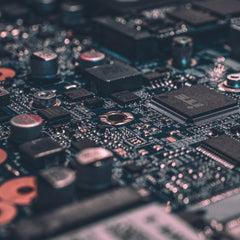This is part 4 of our 5 part series: 10 Internet of Things (IoT) Design Considerations
- Part 1: Cost and Network
- Part 2: Features and User Interface
- Part 3: Power and Size
- Part 5: Interoperability & Security
7. Antenna
Most IoT products use wireless technologies to connect with the world. The type and number of wireless technologies used will impact the type and number of antennas needed. For example, 900MHz, 2.4GHz and 5GHz radios all may have different requirements for antenna design.
Module manufacturers often provide multiple options for antennas, such as an on-board chip or ceramic antennas. They may also offer a wire (or “whip”) antenna, a “trace” antenna, or a “pin-out” so the manufacturer can add their own antenna (either internal or external connector elsewhere on the circuit board). In addition manufacturers may offer U.FL (also called IPEX) connectors for external. In this case, the connection from the U.FL connector to the external antenna is accomplished with a short coaxial “pigtail” that has the mating U.FL connector on one end and the mating connector for the antenna on the other end. The costs of the pigtail and antenna are often overlooked but need to be included in a manufacturer’s BOM for their designs.
When selecting between internal and external antennas, designers must consider the material (metal, plastic, etc.) of the housing and the potential placement of the product within a home or business. If a product is placed behind a couch or under a desk, it may have difficulty getting a wireless signal from the nearest gateway, access point, or router. Metal housings almost always require an external antenna design because the metal in the housing greatly reduces the amount of radio frequencies getting in or out of the housing.
8. Cloud
By definition, most IoT applications include some Cloud-based component. Many manufacturers entering the IoT space are new to Cloud development, which makes decision-making for Cloud applications, such as how and when a product will connect to the Cloud, difficult.
“How” an IoT-enabled device communicates with a cloud application refers to what protocol is being used to communicate with the Cloud. Many early IoT implementations followed a proprietary protocol, where the device manufacturer implements its own protocol to communicate with its cloud applications. Recently, more companies have become aware that a standard protocol is needed for IoT communications to be successful and have started providing third party, end-to-end solutions with platforms to develop and host applications.
“When” an IoT device connects to the cloud, refers to the frequency of data exchange with the cloud application. Devices that are always on (connected to a power supply) can easily stay connected to the cloud constantly. This improves the ability to be “near real time” when communicating with the Cloud application. Battery-powered devices often only connect to the internet and send data periodically in order to conserve battery life. In this case there is a delay, as the device has to re-establish its connection to the wireless router and then to the Cloud server. Battery-powered devices should also consider a “heart-beat,” so that the device connects to the Cloud application periodically without an event to trigger it. This allows the application to know the device is still online and has power or battery-life remaining for when an event does occur.






